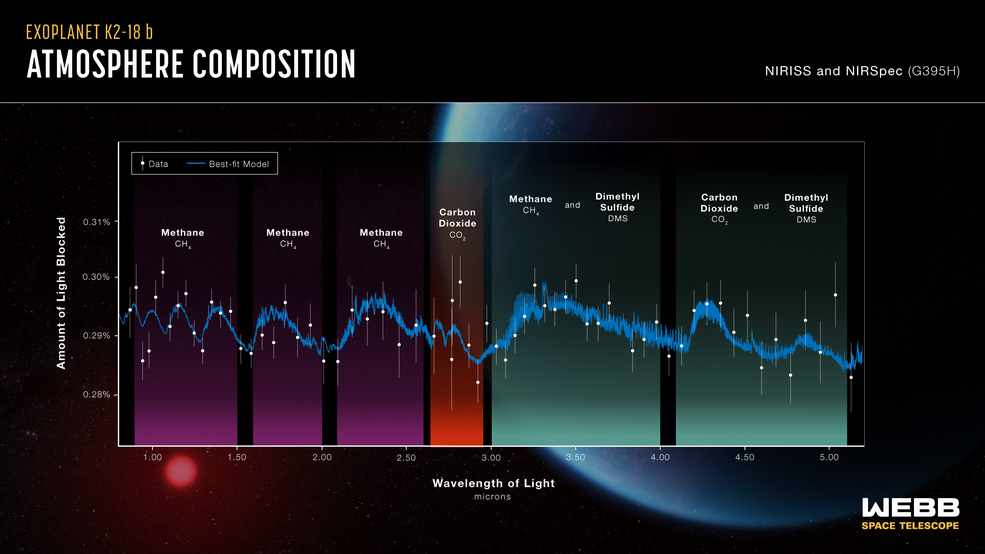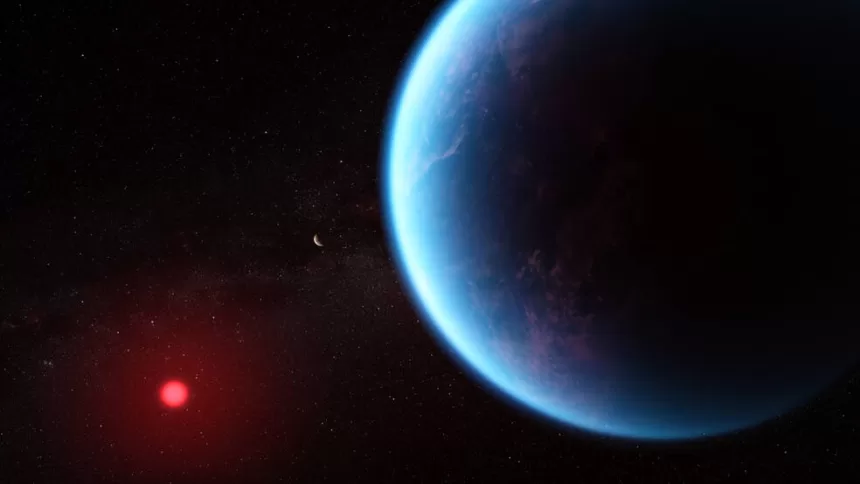In a recent discovery, NASA’s James Webb Space Telescope has unveiled the intriguing secrets of exoplanet K2-18 b, located a distant 120 light-years away from Earth. This exoplanet, over eight times larger than our planet, has captured the imagination of astronomers and space enthusiasts alike due to its potential habitability.
Webb’s discerning eye has detected carbon dioxide and methane in K2-18 b’s atmosphere, prompting speculation about the existence of a water-covered world with a hydrogen-rich atmosphere. Additionally, hints of dimethyl sulphide (DMS) have sparked excitement, as this molecule is typically associated with microbial life on Earth.
While K2-18 b resides within the habitable zone, where conditions could allow for liquid water, it poses numerous challenges to the prospect of hosting life. Let’s delve into this celestial revelation and the implications it holds for our understanding of exoplanets.
The Webb telescope has detected carbon dioxide and methane in the atmosphere of exoplanet K2-18 b, a potentially habitable world over 8 times bigger than Earth. Webb’s data suggests the planet might be covered in ocean, with a hydrogen-rich atmosphere: https://t.co/qN1SqCfFt1 pic.twitter.com/yoXF3flsUl
— NASA Webb Telescope (@NASAWebb) September 11, 2023
Unveiling K2-18 b’s Enigmatic Atmosphere
The James Webb Space Telescope, often dubbed Webb, is revolutionizing our exploration of distant celestial bodies. In its latest feat, Webb has delved into the atmosphere of K2-18 b, an exoplanet that has long captured the curiosity of astronomers. Situated in the constellation Leo, K2-18 b orbits the cool dwarf star K2-18, residing within the habitable zone—a region where conditions might be just right for liquid water to exist.
Carbon-bearing Molecules and the Hycean Hypothesis
One of the most striking findings from Webb’s observations is the presence of carbon-bearing molecules, specifically methane and carbon dioxide, in K2-18 b’s atmosphere. This revelation has sparked speculation about the exoplanet’s potential to be a Hycean world—a term used to describe exoplanets with a hydrogen-rich atmosphere and water ocean-covered surface. Hycean exoplanets have garnered attention for their potential to host environments conducive to life.
The Quest for Biological Clues: Dimethyl Sulphide
Intriguingly, Webb’s data also hints at the presence of dimethyl sulphide (DMS) in K2-18 b’s atmosphere. On Earth, DMS is primarily produced by microbial life, making this discovery particularly tantalizing. However, it’s important to note that this inference of DMS requires further validation, leaving room for ongoing investigations into the potential existence of life on this distant exoplanet.
The Size and Complexity of K2-18 b
K2-18 b, with a radius approximately 2.6 times that of Earth, falls into the category of sub-Neptunes—exoplanets that bridge the gap between Earth-sized planets and Neptune-like giants. This unique classification presents a challenge for astronomers, as sub-Neptunes remain poorly understood due to their scarcity in our galaxy.
The Promise of Webb’s Insights

The success of Webb’s observations marks a significant milestone in the quest to understand exoplanetary atmospheres. The telescope’s extended wavelength range and sensitivity have enabled robust detection of spectral features, providing valuable insights into K2-18 b’s atmosphere. As astronomers look ahead, Webb’s potential to explore habitable-zone exoplanets promises to uncover more mysteries and reshape our understanding of the cosmos.
A Promising Step Forward
While K2-18 b’s location within the habitable zone and the presence of carbon-bearing molecules in its atmosphere are tantalizing, the ultimate question of whether it can support life remains open. Its large size and complex composition pose challenges to habitability.
However, this discovery serves as a promising step toward unraveling the mysteries of Hycean worlds and the potential for life beyond our solar system. Webb’s ongoing observations offer a glimpse into the vast possibilities that the universe holds, underscoring the importance of diverse habitable environments in the search for extraterrestrial life.







